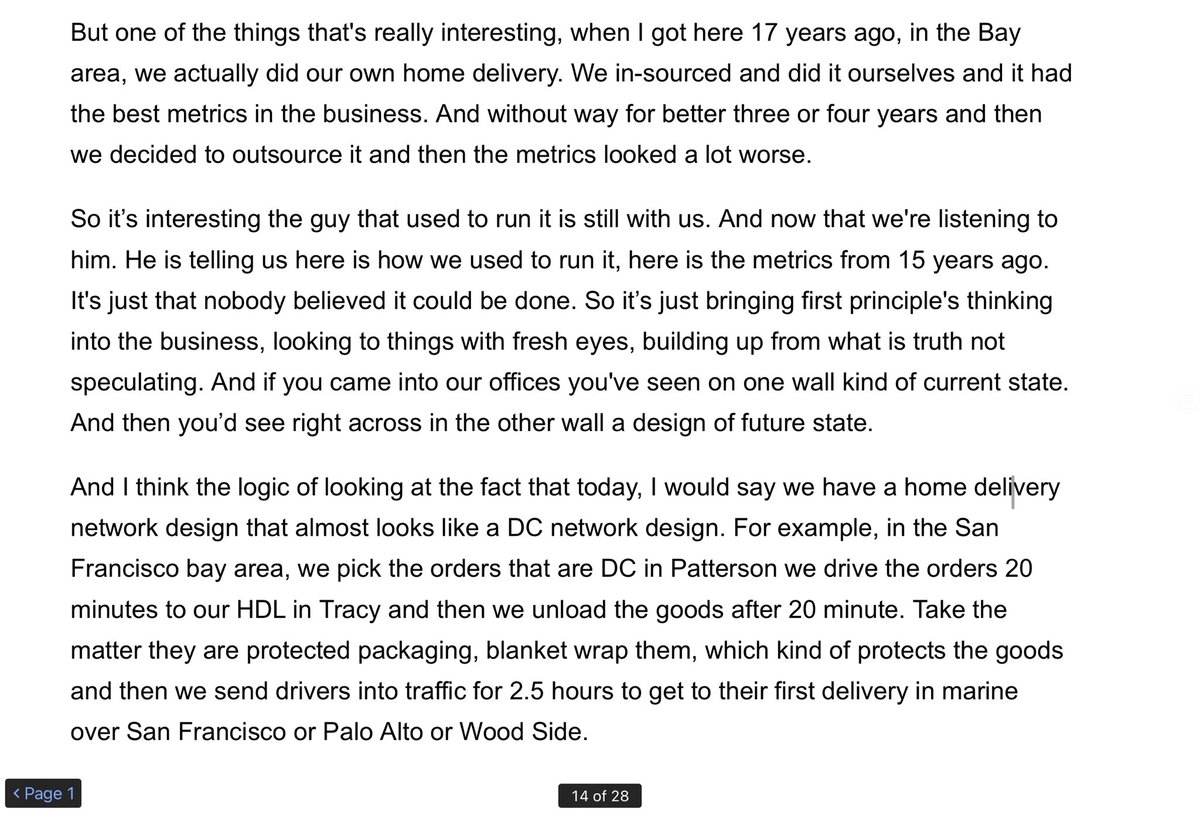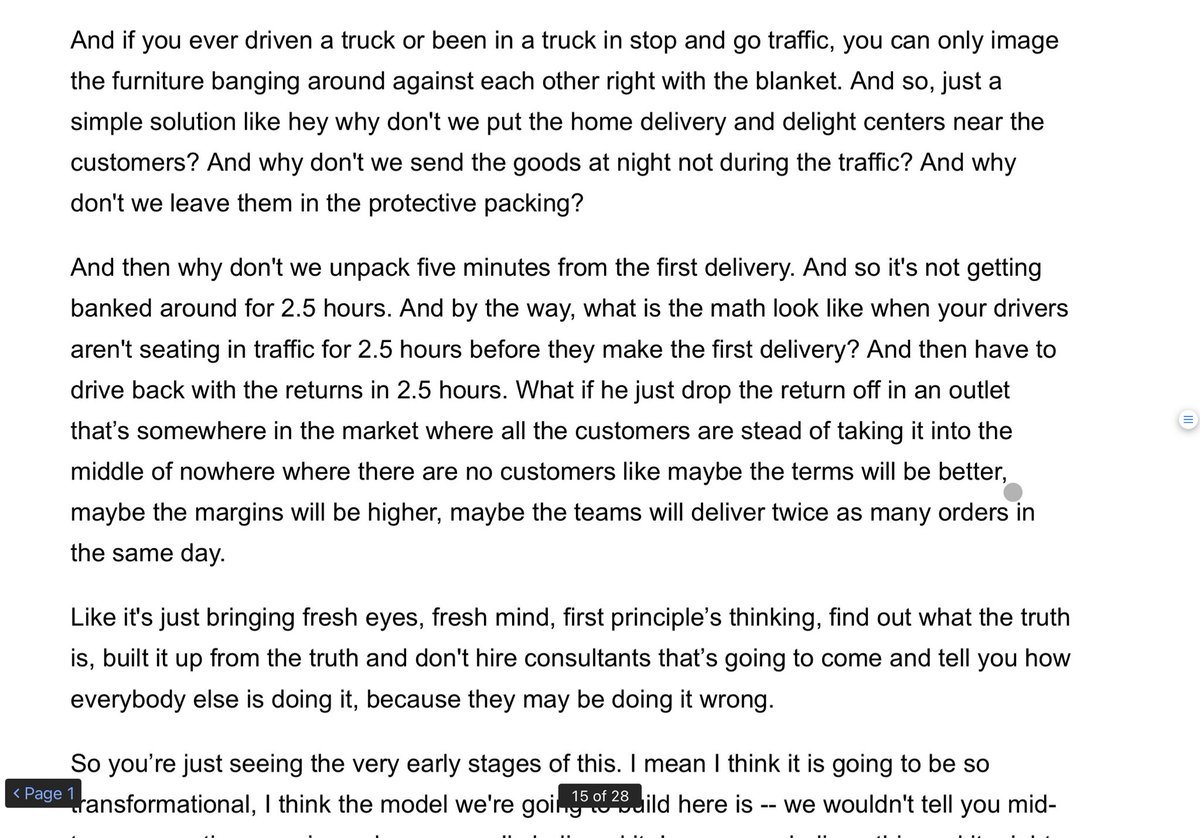Some additional thoughts on $W. A lot of knowledge is cumulative in investing. $W only made sense to me after spending a significant time following $AMZN and $RH. Gary Friedman spent a significant amount of time on one of the Restoration Hardware conference calls talking 1/
about logistics. He said something to effect of how they realized that they had a delivery issue, and they needed to fix it. They could either spend a fortune on consultants, who would basically come in and give them the exact same playbook they’d given countless other 2/
furniture companies, or they could burn their current program to the ground and rebuild it from first principles. They decided on the latter choice. This lead them to realize that they needed to re-architecht their logistics system because doing so would reduce nicks/returns 3/
because the last thing you want to do is deliver scratched furniture to someone buying a $4,000 couch. Now $W isn’t high-end like $RH but they also realized that they needed to own significantly more of the their logistics channel, and they’ve been adding last-mile capacity 4/
like crazy. Moreover, like $AMZN, they know that building out their DCs across the country allows for them to have significantly shorter delivery times than the average furniture store — and, learning from $AMZN’s issues in furniture, they know that bulky packages require 5/
a separate logistics channel because bulky furniture doesn’t fit well w/ the commoditized products that Amazon ships, which helps insulate them from the Big Bad a little bit. But $W gets to borrow from $AMZN’s playbook in other ways. Think about how Walmart grew its store 6/
base. In order for Walmart to grow, it needed to expand at a rate loosely tied to (1) physical store expansion, (2) customer awareness through marketing channels like TV, newspapers, direct mail, etc., and (3) proximity to their end customer. 7/
This is all loosely related to one another, but it’s a limiting factor. Your geographic expansion is basically linked to how fast you can build physical stores and let people know there’s a Walmart in town. 8/
What’s the limiting factor for Wayfair? It’s a distribution center nearby that can service that region. That’s a much larger scale model. In other words, since you are no longer working off the basis that you need physical retail stores to gain proximity to customers 9/
your growth is then limited purely by your ability to market to customers. You’ve disaggregated the physical proximity function to a delivery service (mostly yours + some 3PL) and the customer acquisition function to $FB & $GOOG. 10/
So is it any wonder that Wayfair and companies like it spend so much money on marketing then? Your marketing ability as a function of expansion is literally multiples higher than it would be with a slower physical rollout. /fin

 Read on Twitter
Read on Twitter




